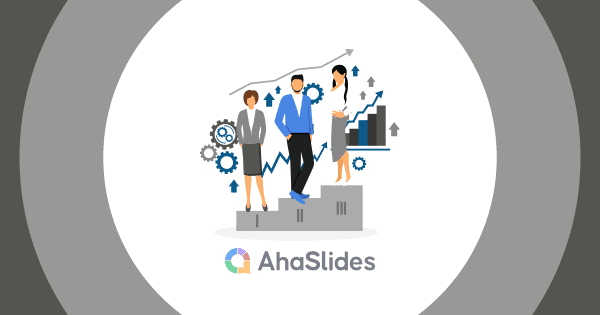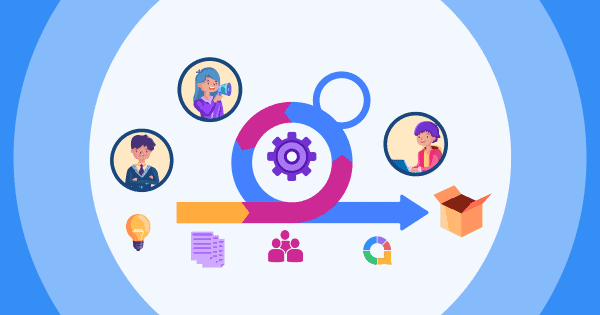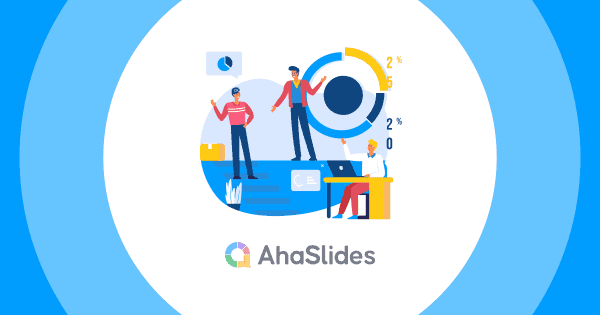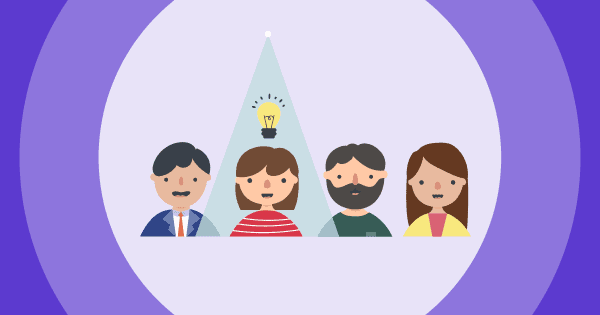プロジェクト管理においては、適切な方法論を選択することが成功に大きな影響を与えます。そこで、私たちは ウォーターフォール手法 詳細に。
この記事では、ウォーターフォール手法について深く掘り下げ、その定義を明らかにし、各フェーズを分解し、メリットとデメリットを検証します。さらに、ウォーターフォール手法が効果を発揮する業界やプロジェクトシナリオについても解説し、次のプロジェクトにウォーターフォール手法が適しているかどうかを判断するお手伝いをします。
それでは、早速ウォーターフォール方式の秘密を明らかにしていきましょう。
目次
概要
| 誰が作成したのか ウォーターフォール方式? | ウィンストン・W・ロイス博士 |
| いつだった ウォーターフォール手法が作成されましたか? | 1970 |
| ウォーターフォール手法に最適な使用例は何ですか? | ソフトウェアエンジニアリングと製品開発 |
ウォーターフォール手法について
| ウォーターフォール手法の定義 | これは、プロジェクト管理における順次的かつ構造化されたアプローチです。各フェーズは前のフェーズを基盤として構築され、あるフェーズから次のフェーズへと直線的に進行します。 |
| ウォーターフォール方式の6つのフェーズ | 要件の収集、設計、実装、テスト、展開、および保守。 |
| のメリット ウォーターフォール手法 | 明確な構造を提供し、ドキュメントを重視し、明確に定義された要件を確立し、プロジェクト管理を提供します。 |
| デメリット Of ウォーターフォール手法 | 柔軟性が限られており、利害関係者の関与が欠如し、コストのかかる変更のリスクが高く、不確実性への適応力が限られています。 |
| いつ適用するか ウォーターフォール手法 | これは通常、プロジェクトの目標と範囲が明確で、要件が明確に定義され安定したプロジェクトに適用されます。 |
| どこに適用するか ウォーターフォール手法 | このモデルは、建設、エンジニアリング、製造、ソフトウェア開発などの業界で一般的です。 |
エンゲージメントを高めるためのヒント

プロジェクトをより適切に管理するための対話型の方法をお探しですか?
次回の会議で使える無料のテンプレートとクイズを入手できます。無料で登録して、AhaSlidesで必要なものを手に入れましょう!
🚀 無料アカウントを取得
ウォーターフォール手法の定義
プロジェクトマネジメントにおけるウォーターフォール手法(またはウォーターフォールモデル)は、プロジェクト管理に用いられる連続的かつ直線的なアプローチです。プロジェクトの各フェーズが完了してから次のフェーズに進むという構造化されたプロセスに従います。この手法は、進捗が滝のように着実に下に向かって流れることから「ウォーターフォール」と呼ばれています。
ウォーターフォール モデルは、ソフトウェア開発、エンジニアリング、建設などのさまざまな分野で使用できます。 期限が厳しく、予算が限られ、範囲が固定されているプロジェクトでよく使用されます。
ウォーターフォール手法の 6 つのフェーズ
ウォーターフォール方式は、明確なフェーズで構成される段階的なプロジェクト管理アプローチを採用しています。これらのフェーズを簡略化して見ていきましょう。
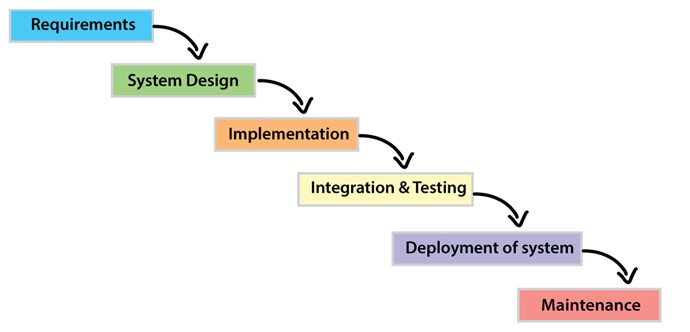
1/ 要件の収集:
このフェーズでは、プロジェクト要件を特定し、文書化します。プロジェクトの関係者は、それぞれの要件と期待が十分に理解されていることを確認するために参加します。このフェーズの目標は、達成すべき目標を定義することで、プロジェクトの強固な基盤を構築することです。
たとえば、新しい電子商取引 Web サイト用のソフトウェア開発プロジェクトがあるとします。 このフェーズでは、プロジェクト チームは次のことを行います。
- ビジネスオーナー、マーケティング専門家、潜在的なエンドユーザーなどのさまざまな関係者と関わり、意見や要件を収集します。
- インタビュー、ミーティング、ワークショップを実施して、Web サイトの目標、機能、期待を理解します。
2/デザイン:
要件が収集されると、設計フェーズが始まります。ここでは、プロジェクトチームがプロジェクトの詳細な計画、つまり青写真を作成します。これには、構造、コンポーネント、ユーザーエクスペリエンスの定義が含まれます。
設計フェーズでは、開発者、設計者、すべての利害関係者を含む関係者全員がプロジェクトの構造と外観について明確なビジョンを持つようにすることを目的としています。
3/ 実装:
実装フェーズでは、実際の開発作業が行われます。 プロジェクト チームは、設計仕様に従ってプロジェクト成果物の構築を開始します。
家を建てることと同じだと考えてください。 実装フェーズでは、建設業者が基礎、壁、屋根、配管、電気システムの作業を開始します。 彼らは建築計画に従い、それを具体的な構造物に変えます。
同様に、このフェーズでは、開発者は前に作成した設計計画に従い、プロジェクトを機能させるために必要なコードを作成します。 これらは、機能、機能、インターフェイスなどのプロジェクトのさまざまな部分をまとめ、スムーズに機能するようにそれらを接続します。
4/ テスト:
実装段階の後、プロジェクトの品質と機能を保証するために厳格なテストが実行されます。 単体テスト、結合テスト、システムテストなど、さまざまな種類のテストを実行して、欠陥や問題を特定します。
テスト段階は、プロジェクトが指定された要件を満たし、期待どおりに実行されることを検証することを目的としています。
5/展開:
デプロイメントは、プロジェクトをリリースして使用する準備が整うフェーズです。 これはテスト段階が完了した後に発生します。
導入フェーズでは、ソフトウェアや Web サイトなどのプロジェクトの成果物がリリースされ、現実世界に実装されます。 これらは、実際に使用するためにすべてがセットアップされる運用環境にインストールされるか、プロジェクトを要求したクライアントに配信されます。
- 例えばウェブサイトの場合、プロジェクトチームはウェブサーバー、データベース、その他必要なインフラストラクチャを構築し、すべてが適切に構成され、スムーズに動作することを確認します。
6/メンテナンス:
メンテナンス段階では、プロジェクト チームは、発生する可能性のある問題に対処するための継続的なサポートを提供します。 メンテナンス フェーズの主な目標は、プロジェクトが適切に機能し続け、ユーザーの期待に応えられるようにすることです。
- プロジェクトでバグや問題が発見された場合、チームはそれらの修正に取り組みます。
- チームは、ユーザーからのフィードバックや新たな要件に基づいて、プロジェクトに必要な変更や改善を検討します。これは、お気に入りのアプリに新しい機能を追加することを提案し、開発者が耳を傾けて実現してくれるのと似ています。
プロジェクト チームは、プロジェクトが継続している限り、サポートを提供し、問題を修正し、必要な更新や変更を行います。 これは、プロジェクトの信頼性、安全性、および最新性を維持するのに役立ちます。
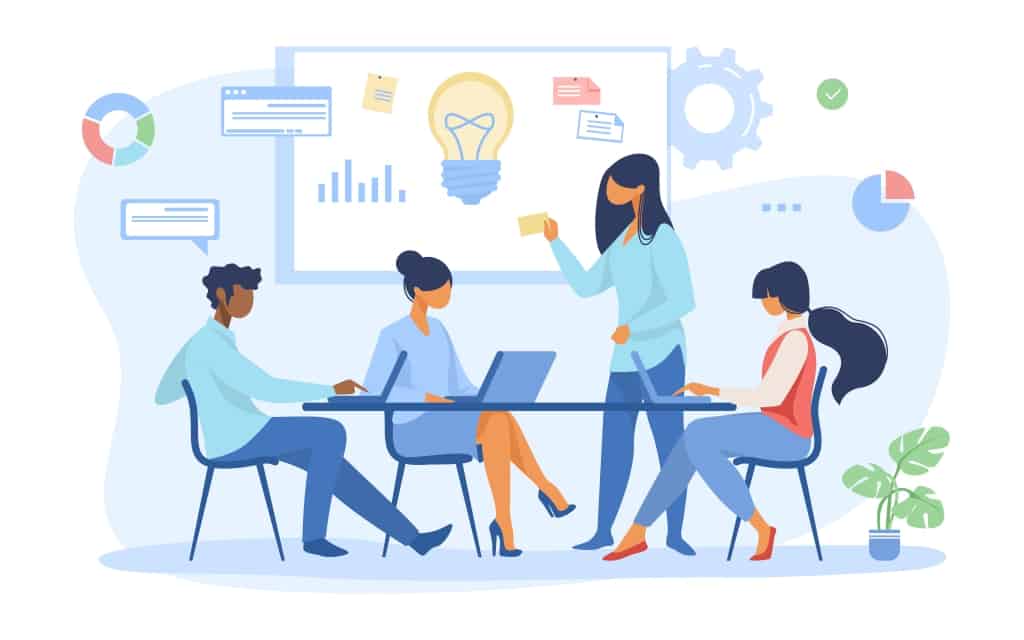
ウォーターフォール手法の長所と短所
ウォーターフォール方式の利点
- 明確で構造化されたアプローチ: この方法論は、プロジェクトを管理するための明確で組織的な方法を提供します。 段階的なプロセスに従っており、チームが作業を計画して実行することが容易になります。
- 詳細なドキュメント: このモデルは、あらゆる段階での文書化の重要性を強調しています。 これは、プロジェクトの要件、設計計画、実装の詳細が十分に文書化されていることを意味します。 このドキュメントは将来の参照に役立ち、組織内で知識を維持するのに役立ちます。
- 要件の早期特定: この方法論は、プロジェクト要件を早期に特定して定義することに重点を置いています。 こうすることで、潜在的な誤解や範囲の変更を最小限に抑えることができます。 プロジェクトの開始時から強固な基盤を提供します。
- マイルストーンと成果物を明確にする: この方法論により、プロジェクトの各フェーズで明確なマイルストーンと成果物の設定が可能になります。 これは、プロジェクト マネージャーが進捗状況を追跡し、事前定義された目標に対する成功を測定するのに役立ちます。 チームが各マイルストーンを完了すると達成感が得られます。
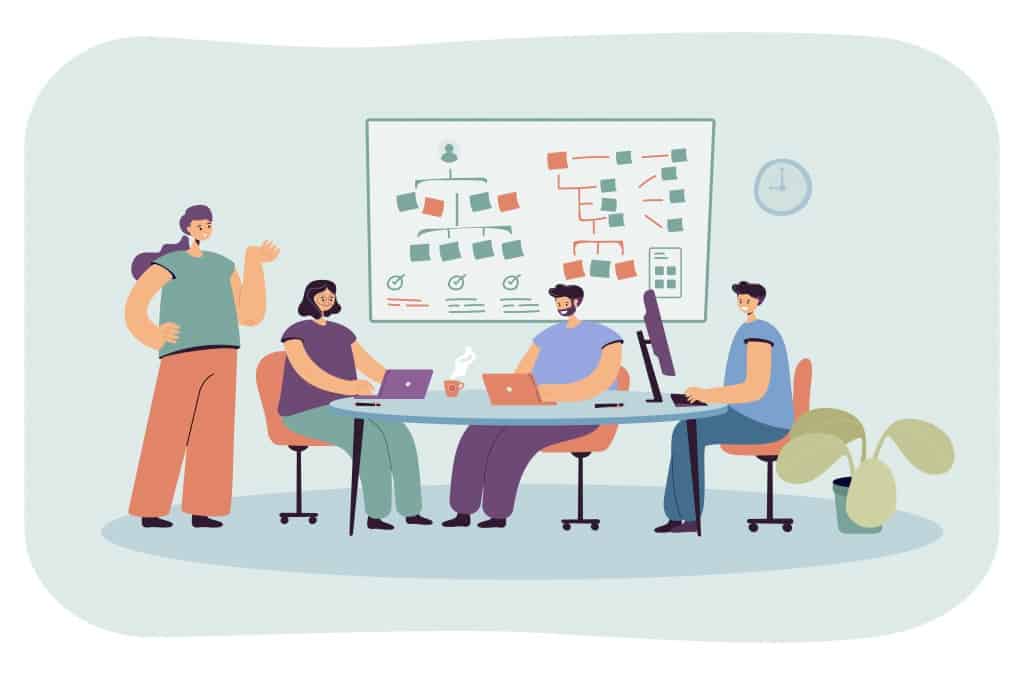
ウォーターフォール方式の欠点
- 制限された柔軟性: この方法論には、柔軟性に欠けるという欠点があります。フェーズが完了すると、変更を加えることが困難になります。この制約により、変化する要件への適応や、プロジェクトの後期段階でのフィードバックの反映が困難になる可能性があります。これにより、プロジェクトが変化するニーズに柔軟に対応し、迅速に対応することが制限される可能性があります。
- 利害関係者の関与の欠如: このモデルでは、利害関係者の関与は限定的であり、プロジェクトの後の段階でのみフィードバックを提供する場合があります。 この取り組みの遅れにより、最終結果が利害関係者の期待を満たさなかった場合、驚きや失望が生じる可能性があります。
- コストのかかる変更のリスクが高い: この手法は段階的な性質を持つため、後期段階で発見された変更や問題への対処には時間と費用がかかる可能性があります。プロジェクトを修正するには、以前のフェーズに戻る必要があり、プロジェクトのスケジュールと予算に支障をきたす可能性があります。こうした変更は、追加コストや遅延につながる可能性があります。
- 不確実性に対する限定的な適応性: このモデルは、プロジェクトの要件が最初に完全に理解され、定義できることを前提としています。 ただし、複雑なプロジェクトや不確実な環境では、事前に完全に理解することが難しい場合があります。 この制限により、予期せぬ状況や状況の変化に直面したときに、望ましい結果を達成することが困難になる可能性があります。
プロジェクトや組織の状況に応じて、異なる手法がより適切な場合があります。それでは、次のセクションでウォーターフォールモデルを適用すべきタイミングについて見ていきましょう。
ウォーターフォール方式はいつ、どこで適用すべきでしょうか?
この方法論は通常、プロジェクトの目標と範囲が明確で、明確に定義された安定した要件を持つプロジェクトに適用されます。 このモデルは、建設、エンジニアリング、製造、ソフトウェア開発などの業界で一般的です。

ウォーターフォール手法を効果的に適用できるシナリオをいくつか示します。
- 逐次的かつ予測可能なプロジェクト: 建物の建設など、タスクの順序が明確でフローが予測可能なプロジェクトに適しています。
- 明確な目的を持つ小規模プロジェクト: シンプルなモバイルアプリの開発など、目的が明確に定義された小規模なプロジェクトに効果的です。
- 安定した要件と限定的な変更: プロジェクトの要件が安定しており、大きく変更される可能性が低い場合には、ウォーターフォール手法が適しています。
- コンプライアンスと文書の要件: 医療業界や航空宇宙業界など、徹底した文書化と規制への準拠が必要なプロジェクトに有益です。
- ユーザーのニーズが明確に定義されたプロジェクト: 特定のクライアントの仕様に従って Web サイトを構築する場合など、ユーザーの要件が最初から明確に理解されている場合に適用できます。
ウォーターフォール方式は、適応性、ステークホルダーの頻繁な関与、あるいは変化する要件への対応が求められるプロジェクトには適さない場合があることを覚えておくことが重要です。そのような場合、アジャイル方式が好まれることが多いです。
主要なポイント(要点)
ウォーターフォール手法は、連続的で予測可能なタスクを伴うプロジェクト、明確な目的を持つ小規模プロジェクト、または明確に定義されたユーザー プロジェクトに適しています。 ただし、適応性や利害関係者の関与が頻繁に必要なプロジェクトには適していない可能性があります。
そして、次のようなツールを活用することで あはスライドウォーターフォール手法の実装を強化できます。AhaSlidesは貴重な情報を提供します。 テンプレート および インタラクティブ機能 プロジェクトの計画、設計、コミュニケーションを効率化します。AhaSlidesを使用すると、チームは魅力的なプレゼンテーションを作成し、進捗状況を効果的に追跡し、プロジェクト全体の成果を向上させることができます。
ウォーターフォール手法に関するよくある質問
ウォーターフォールモデルとは何ですか?
プロジェクト管理におけるウォーターフォール方法論 (またはウォーターフォール モデル) は、プロジェクトを管理するために使用される逐次的かつ直線的なアプローチです。 プロジェクトの各フェーズが完了してから次のフェーズに進む、構造化されたプロセスに従います。
ウォーターフォール モデルの 5 つの段階とは何ですか?
ウォーターフォール モデルの 5 つの段階は次のとおりです。
- 要件の収集
- 設計
- 製品の導入
- テスト
- 展開とメンテナンス
ウォーターフォールモデルの利点と欠点は何ですか?
ウォーターフォール方式の利点:
- 明確で構造化されたアプローチを持っています
- 詳細なドキュメントを提供します
- 要件の早期特定が可能
- 明確なマイルストーンと成果物を提供します
ウォーターフォール方式の欠点
- 柔軟性が限られている
- 利害関係者の関与が欠如している
- コストのかかる変更のリスクが高い
- 不確実性への適応力は限られている
